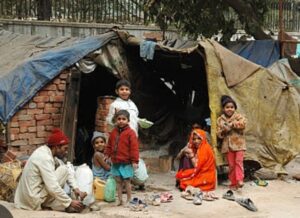Poverty and Food Security
Poverty and Food Security are the important chapters of Economics covering the syllabus of class 9th given in very simple languagePoverty and Food Security are the important chapters of Economics covering the syllabus of class 9th given in very simple language
POVERTY and Food Security refers to the situation in which a person is not able to get the minimum basic necessities of life example food , clothing shelter for his /her sustenance. Every fifth Indian is poor .
India is having the largest number of poor people in the world. However latest report suggests that India is no longer a nation having largest the number of poor in the world .
Nigeria overtook India as the country with the largest number of extreme poor ( The Times of India 27 June 2018 )
URBAN Poverty and Food Security ;
They do not have physical assets and generally live in slums . Rikshaw pullers , cobblers hawkers , rag pickers , daily wage labourers
RURAL Poverty and Food Security in which people do not have agriculture land , they are landless farmers . agricultural labours , small and marginal farmers,
VIEWS OF SOCIAL SCIENTISTS about Poverty : Poverty refers to the level of income and consumption . Apart from this poverty is looked through other social indicators like illiteracy level , lack of general resistance due to malnutrition lack of access to health care , lack of jobs , lack of safe drinking water and sanitation.
SOCIAL EXCLUSION : Poverty is seen in terms of poor have to live in the poor surroundings with other poor people.
VULNERABILITY ; It is to poverty is a measure, which describes the greater probability of certain communities or individuals of becoming or remaining poor in the coming years
POVERTY LINE :A person is considered poor if his/her income/consumption level falls below a given minimum level necessary to fulfill basic needs.
This minimum level is referred to as Poverty line It is determined on the basis of calories that in Rural Aera 2400 calories per person per day and in Urban Aera the consumption is2100 calories per person per day
On the basis of Income poverty is defined as in Rural Aera person earning is Rs 816 /month and in Urban Aer the earning per month is Rs 1000
The monetary expenditure per capita neede for buying the requisite calorie requirements in terms of food grains etc. is calculated. It is revised periodically taking into the considerationthe rise in prices.
The Poverty and Food Security estimation:
On he basis of these calculations, for the year 2011-12b the poverty line for the person was fixed at Rs 816/month for Rural Aera and Rs 1000/month for the urban aera.These estimates were given by TENDULKAR COMMITTEE.
The planning commission /NITI Aayog had appointed another committee in 2014 under chairmanship Rangarajan and poverty raised to Rs 972 /person/month in Rural Aera and in Urban Aera Rs1407 /person/month
VULNERABLE GROUP Of Poverty :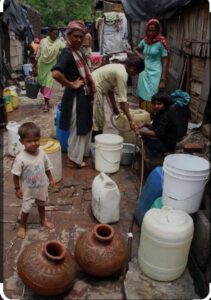
Schedule Tribes (ST) , Schedule Caste (SC) , Agricultural Labour and Casual Laborers are the most vulnerable groups in India they always remain poor throughout year
INTER -STATE DISPARTIES of Poverty;
It is the proportion of poor people is not the same in every state such as in Bihar and Odisha are the poorest states in India
DECLINE IN POVERTY : In Punjab and Haryana due to high agricultural growth, In Kerala owing to more focus on human resources in development ,
In West Bengal there had been greater mount of land reforms and in states like Andhra Pradesh and Tamil Nadu public distribution of food grains are the main causes to decline poverty in their respective states
NATIONAL SAMPLE SURVEY ORGANISATION (NSSO) This is the organization that estimates the poverty line periodically within the period of 5 years by conducting sample surveys
GLOBAL POVERTY SCENARIO : According to the World Bank a person living on less than 1.90 us dollar per person per day is said to be poor. According to most recent estimates in 2013 10.7% of the World Population lived on less than 1.97 us dollar a day
THE SUSTAINABLE DEVELOPMENT GOALS(SDG) of the United Nations calls for endingthe extreme poverty by 2030.
CAUSES OF POVERTY a) Policies of British Era b) Low economic growth after Independence upto eighties c) Population Growth d) Limited Sucess of Green Revolution e) Unequal distribution of land and other resources f) Socio – Cultural Factors .
ANTI- POVERTY MEASURES
a) Promotion of Economic Growth:
There is a strong link between economic growth and poverty reduction . economic growth widens opportunities and provide the resources needed to invest in human development but the poor may not be able to take advantage from the opportunities created by economic growth.
Growth also increase the government revenues and consequently , it could afford the programes for poverty reduction . That is why these two strategies are also known as complementary to each other.
b) TARGETED ANTI – POVERTY PROGRAMMES : Mahatma Gandhi National Rural Employment Guarantee Act 2005 , Prime Minister Rozgar Yojana , Swaran Jayanti Graim Swarozgar Yojana , Pradhan Mantri Gramodaya Yojana, Antyodaya Anna Yojana
POVERTY REDUCTION and Economic Growth : The economic growth up to the early eighties,1980 and 1990 and level of poverty is a direct evidence of connection between economic growth and poverty reduction .
But , the question arises how the growth helps in the reduction of poverty ? Conceptually rapid economic growth works through two channels
It creates well paid jobs and rises real wages. Both the factors raise incomes of poor households there by directly reducing the poverty.
Further , with increased income ,the households are able to spend in education and health services. This spending in education and health helps in then reduction of poverty in the long run .
More income leads to more investment in businesses and industries thereby creating more employment and consequently reduction in poverty.
Rapid economic growth leads to growth in the government revenues. The government uses these increased revenues in the running various welfare programmes .
It is because of the increasing revenue that India could afford Mahatma Gandhi National Rural Employment Guarantee Scheme and near universal Public Distribution System (PDS)
MAHATMA GANDHI NATIONAL RURAL GUARANTEE ACT2005;
Its aim is assuring employment to every rural households, Minimum 100 days of assured employment in a year, one third jobs are reserved for women ,
If an applicant is not provided employment with 15 days he/she is entitled to daily unemployment allowance , wages as per the minimum wages act . 1
PRIME MINISTER ROZGAR YOJANA : It is started in 1993 with the aim to create self employment opportunities for educated unemployment youth in rural and small towns. It help is setting small business and industries
THE CHALLENGES A HEAD AND NEW APPROACHES IN POVERTY REDUCTION :
The Sustainable Development goals (SDG) of the United Nations calls for ending the extreme poverty by 2030 .
In this context reduction of poverty requires innovative approaches in the country. Further with the development , it is expected that the definition of poverty would change. Though we have been able to maintain high economic growth in the last 20 years , but this has not resulted in creating large number of employment, further we need to make anti – poverty schemes more effective new approaches
i) Jan Dhan Yojana , Aadhar and Mobile This trinity could play an important role in the widening the reach of the government to vulnerable sections.
This would prevent in the leakages in the distribution in the long run . Universal Basic Income .:It is considered as an alternative to various state subsides for the poverty alleviation . by Economic Survey 2017 .
Though it is still at discussion level , The Universal basics income envisages paying the beneficiaries directly into the bank accounts to help reduce leakage
FOOD SECURITY ;
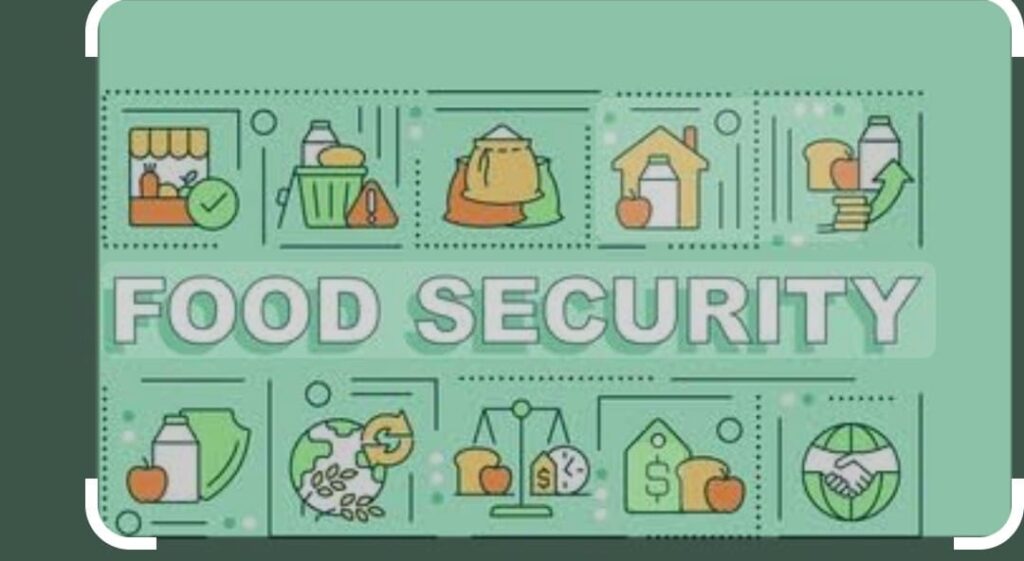
DIMENSIONSOF FOOD SECURITY IN INDIA depends on
a) Availability which consist of food production within the country, import of food products and the stock stored in government granaries
b) Accessibility of food is a kind of food within the reach of every
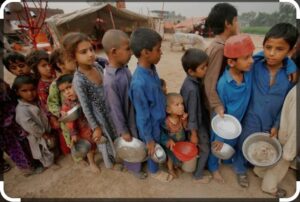 c) Affordability of food is the enough food is available for all persons ,persons have capacity to buy food of acceptable quality , and there is no barrier on the access of food.
c) Affordability of food is the enough food is available for all persons ,persons have capacity to buy food of acceptable quality , and there is no barrier on the access of food.
FOOD INSECURITY ;The poorest section of the society remains food insecure all the times. People above poverty line might also feel food insecure in the times of natural calamity like earth quake , drought, flood and tsunami etc
In urban aera food insecurity is noticed in person employed in low paid occupations and casual labour which are in social composition of SC,ST,OBC, migrants ,female and new born babies
In Rural aera it is among the small and landless farmers, traditional artisans such as weavers ,potters, providers of services as barbers,washer men and women , household servants, petty self employed
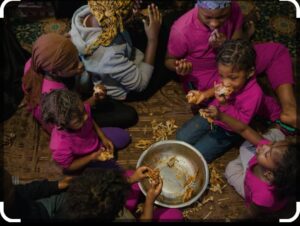
EFFECTS During Natural calamity the production of food grain decreases due to which there is a shortage of food grains so the price of the food product rise which becomes less affordable to most of the poor people that causes massive starvation result in famine, malnutrition and wide spread of death.
HUNGER is an aspect of not just indicating food insecurity and poverty but also brings poverty The attainment of food security involves eliminating current hunger and reducing the risk future hunger
HUNGER HAS CHRONIC AND SEASONAL DIMENSIONS because that
i) Poor people suffer from chronic hunger due to very low income and are food insecure all the times
ii) In Rural aera seasonal hunger is caused by the seasonal nature of agricultural activities
iii) In urban aera the seasonal hunger occurs because of the casual type of work like construction workers won’t get work during rainy season .
THERE IS A GREAT NEED FOR SELF- SUFFICIENCY IN Food Security so that
i) we could feed rising population
ii) To fight against drought, floods and cyclones
iii) to reduce import of food grains
iv) To control the prices of the food grains to make affordable even for poor people .
The Government has taken important steps for the food security
i) Opening of Fair Price Shops
ii) Maintain the Buffer Stock
iii)Giving minimum support price and subsidy to the farmers to increase the income of farmers and their consumption
iv)Issue the price of food grain to create affordability
v) Making Public Distribution System well aquipped.
BUFFER STOCK in Food Security is the stock of food grains such as wheat and rice procured by the government through the FOOD CORPORATION OF INDIA (FCI). The FCI purchases wheat and rice for the government from the farmers of surplus states at pre- announced prices. This is called MSP ie minimum support price .
The grains that are stored in Buffer Stocks are distributed in deficit aeras and among the poor people of the society at a price lower than the market price which is called issue price .
Subsidy is the payment that the government makes to the producer to supplement the market price of a commodity . It keeps consumer prices low while maintain a higher income for producers
Role of RATIONING in Food Security in India which started back to 1940 against the backdrop of Bengal Famine but was revived in the wake of acute food shortage during 1960 before Green Revolution
Around the mid of 1970 the three important intervention programmes were introduced which were i) Public Distribution System (PDS) ii) Integrated Child Development Services (ICDS) iii) Aood for Work (FFW)
Rolr PUBLIC DISTRIBUTION SYSTEM in Food Security refers to a system trough which the food procured by FCI is distributed among the poor through the government regulated ration shops by using ration cards .
There are about 5.5 lakh ration shops all over the country also known as Fair Price Shop, which keeps stock of food grains, sugar which is sold at very low price .
There are three kinds of ration cards
i) ANTYODAYA CARDS it is for the poorest of the poor
ii)BPL CARD for those people they lie below poverty line
iii) APL CARD for all other people
NATIONAL FOOD SECURITY ACT 2013 of Food Security was passed to provide food and nutritional security at affordable price to 75% of the Rural population and 50% of the Urban population
A CO- OPERATIVE SOCIETY in Food Security is an autonomous group of people who unite at their own will to meet their common economic, social and cultural need through a jointly owned and democratically controlled company.
These co-operatives societies along with serval non – government organization (NGO) also play an important role ensuring food security by setting up shops to sell low priced goods to people such as Amul , Mother Dairy
The Green Revolution which increased the quantity of food production by using HYV seeds and modern agricultural technique has been a torch bearer in ensuring the food security in India .In India NSSO has the responsibility to collect the data of Economic Survey .
THE ROLE OF CO-OPERTAIVE IN FOOD SECURITY
i) These societies are set up the shops to sell low priced goods to poor people
ii) In Delhi, Mother Dairy is making strides in providing of milk and vegetables at controlled price decided by the government
iii)Amul is another success story of co-operatives in milk and milk product from Gujarat .It has brought the White Revolution in the country
. iv) In Maharashtra The Academy Of Development Science (ADS) has facilitated a network of NGO for setting up grain banks in different region
Features of different programmes
i)PDS introduced up to 1992 targeted universal group
ii) Revamped PDS (RPDS) in 1992 for the remote and backward aera of the country
iii) Targeted PDS in 1997 for BPL and APL
iv) Antyodaya Anna Yojana (AAY)in 2000 for the poorest of poor v) Annapurna Yojana (APY) in2000 for poverty stricken poor senior citizens
vi) National Food Security Act in 2013 given priority household vii) Mid Day Meal in 1995 for the students up to class 8th
Conclusion : Poverty and Food Security
In the conclusion we assure that the Poverty and Food Security are the important chapters of Economics covering the syllabus of class 9th given in very simple language with basic idea of poverty , causes , measure along with food security required for the developing economy of our country .
Follow us on: Facebook
Read More : The story of Palampur People
